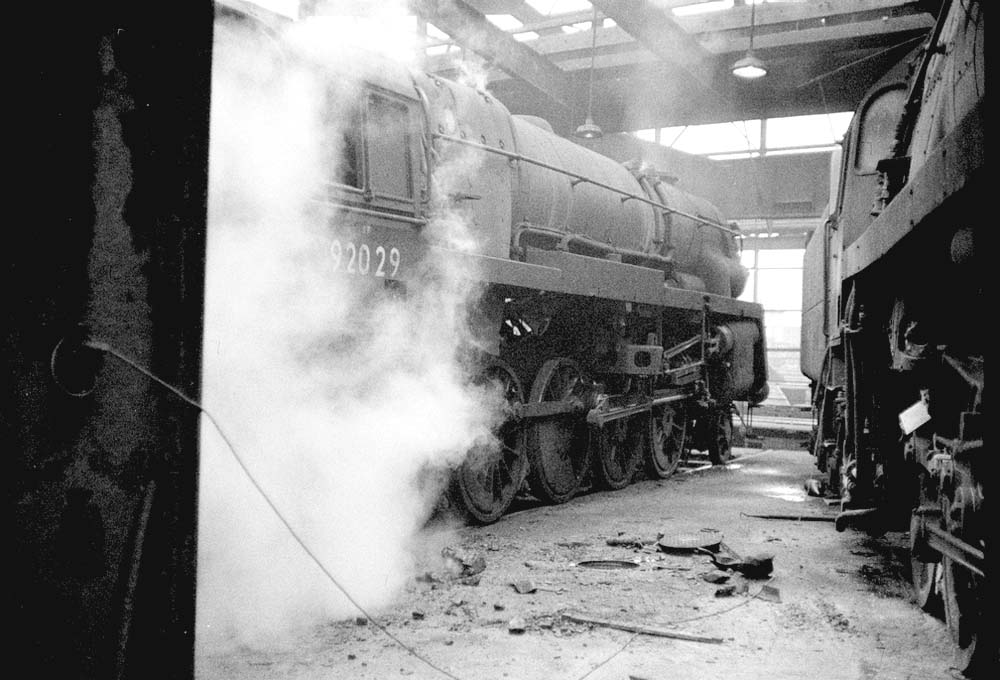|
|
 |
 |
|
London North Western
Railway:

Midland
Railway:

Stratford
Midland Junction Railway
|

|
LMS Route: Nuneaton to Birmingham New Street
LMS Route: Birmingham New Street to Tamworth
Saltley Shed: mrsalt1212, mrsalt1211, mrsalt1268 and
mrsalt1269
 |
British Railways Standard Class Crosti-boilered 9F 2-10-0 No
92029 is wreathed in steam as it prepares to depart the roundhouse. In the view
seen below the driver carefully draws the locomotive forward needing to ensure
the locomotive is balanced on the turntable. Failure to do so would result in
making it very difficult for the locomotive to be turned. Built at Crewe works
in July 1955 No 92029 was the last of ten locomotives built with the
experimental Franco-Crosti boiler, which was decommissioned in August 1960 when
the pre-heater was sealed off, and remained in service until November 1967 when
it was withdrawn from 8H Birkenhead shed. The Franco-Crosti boiler is a type of
boiler used for steam locomotives. It was designed in the 1930s by Attilio
Franco and Dr Piero Crosti, two engineers working for the Ferrovie dello Stato
(FS), the Italian state railway. The Franco-Crosti boiler is a modification of
the conventional fire tube boiler design used on most steam locomotives. Unlike
conventional boilers the heat remaining in the exhaust gases is used to preheat
the water supply for the main boiler using a secondary heat exchange mechanism.
This mechanism, known as the feedwater heater is essentially a secondary
boiler.
The preheated feedwater is fed at full boiler pressure into
the main boiler via clack valves. The feedwater heater is not designed to
produce steam, instead raising the temperature of the feedwater. This allows
the heater to utilize the remaining energy in the exhaust gases effectively.
The typical configuration of a Franco-Crosti boiler had a relatively
conventional main boiler with one or two secondary feedwater heaters running
parallel to the boiler barrel. Where the loading gauge did not allow the
feedwater heater to be placed beside the boiler it was mounted beneath. When
the locomotive is started, cold water is fed directly into the main boiler
which operates normally with the exhaust gases flowing out of the main chimney
via the smokebox. Once the boiler is producing steam, the exit from the
smokebox into the main chimney is closed and the exhaust gases instead flow
through the feedwater heater and exit via the secondary chimney located towards
the rear of the locomotive. Water fed into the boiler is now pre-heated in the
feedwater heater and enters the boiler at higher than normal temperature and
pressure.
Saltley Shed: mrsalt1211
The two following views show the locomotive on another
occasion but not in steam.
Saltley Shed: mrsalt1269
Saltley Shed: mrsalt1268
 back back

|
|
|
